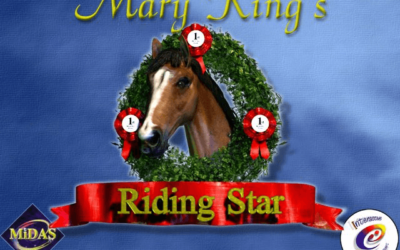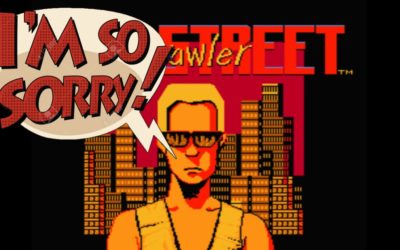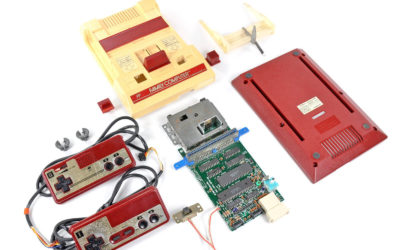Welcome to the Popular Memory Archive
Welcome to the Play It Again project.
Play It Again is an ARC Linkage project researching the history and preservation needs of 1990s digital games in Australia.
Digital games make up a significant but little known chapter in the history of the moving image in Australia. This site aims to exhibit some of the significant local games of the 1980s and 1990s era, and collect documentation in order to remember early games through popular memory.
This site features a curated exhibition of information on 50 Australian and New Zealand games from the 1980s and the creators and companies behind them – and we are in the process of adding 50 Australian games from the 1990s.
Help us to build a database of information about Australia’s early videogame history: please add your comments on the games and companies, and contribute your memories and artefacts to the site.
Our aim is to record a history of games production and reception so we want to capture your experiences of playing the games, making games, modding, hosting LANS, and all aspects of local Australian game culture.
The Popular Memory Archive is supported by the Australian Centre for the Moving Image (ACMI). Your contributions will help build a history of Australian videogames as experienced by those who played their way through the era.
The Popular Memory Archive has been developed by Helen Stuckey , Denise De Vries, Melanie Swalwell and Angela Ndalianis, and is a collaboration of Swinburne and RMIT Universities, ACMI and AARNET. The site will run for a period of 18 months and then will be archived at the Internet Archive and ACMI, so the contributions can be of benefit to future researchers.
Please browse our site and help us build a database of information about 1990s computer games to assist game history researchers, now and in the future.
 Play it Again: Preserving Australian Video Game History of the 1990s is supported by the Australian Government through the Australian Research Council’s Linkage Projects funding scheme (project LP180100104). The views expressed herein are those of the authors and are not necessarily those of the Australian Government or Australian Research Council.
Play it Again: Preserving Australian Video Game History of the 1990s is supported by the Australian Government through the Australian Research Council’s Linkage Projects funding scheme (project LP180100104). The views expressed herein are those of the authors and are not necessarily those of the Australian Government or Australian Research Council.
Latest Blog Posts
Australia’s Equestrian Games – An Interview with Riding Star creator Andrew Niere
IR Gurus’ Andrew Niere shares insights into Australia’s homegrown equestrian games.
The making of Bad Street Brawler by Andrew Davie
I recall distinctly when the first Famicom (Japan version of the NES) arrived at Melbourne House/BEAM. Fred Milgrom had directed them to reverse engineer it. Nintendo, at that stage, wanted a significant fortune and your first-born child for the rights to program games for it – and Fred wasn’t going down that pathway. The Famicom was actually a 6502-based machine. I was a 6502 guy (as opposed to the Z80 people). It’s not that I really wanted to program the machine, but more that I realised that if it was any good, then I’d have an easy time of it. Little did I know.
How Nintendo threatened to destroy the early Australian Game industry
How Nintendo threatened to destroy the early Australian Game industry and Beam Software became an accredited developer for the NES. In 1983, when the Famicom was first released in Japan, Beam Software co-founder and CEO Alfred Milgrom travelled to Japan and acquired some machines. He brought them back to the South Melbourne offices of Beam where Adrian Thewlis, disassembled them.
80’s Games
Laser Hawk
“Laser Hawk” is a “Scramble” clone. It was inspired by “Tail of Beta Lyrae”. The game has 5 stages, and at the end of each stage a command center must be destroyed (earning an extra helicopter). These are the headquarters of rival computer companies of the time, namely Apple, Amstrad, BBC, Commodore and Spectrum.
Melbourne Draw
“Melbourne Draw” is one of a couple of graphics toolkits that were created for the ZX Spectrum in the early 1980s. It was launched to widespread publicity, with “Crash” magazine saying that ‘”Melbourne Draw” stands out clearly as a professional tool”.
Moonbase Alpha
“Moonbase Alpha” is a graphic adventure game with speech samples. It is one of only two sc-3000 titles to feature digitised speech.
Necromancer 2
“Necromancer 2” is an isometric arcade adventure. It is a clone of Ultimate’s classic 3D games, such as “Knightlore”. The game runs on C64 and also runs on a Vic 20. It was, during its day, an advanced amateur game, being an isometric 3D game.
QB
The goal of the game is simple: you slide blocks into a pattern, as shown in the upper right-hand corner of the screen. You can only move the blocks you are standing on, and you can only jump onto other blocks that you are directly next to. Fruit will appear as bonuses, and monsters will try to kill you or slide the blocks around, slowing your progress.
One Day Cricket
“One Day Cricket” is a game for 2 to 22 players It is a sports simulation game, with New Zealand versing Australia in One Day International Cricket. The game has the Australian and New Zealand teams built in, or if you choose, you can make your own teams up.
Penetrator
The tastefully named “Penetrator” was one of Beam Software’s earliest games. Designed for the ZX Spectrum by Philip Mitchell and Veronika Megler the game is a clone of Konami’s popular 1981 arcade game “Scramble”. A sideways scrolling shooter “Penetrator” recreates “Scramble”’s challenges of flying and shooting…
Pieces of Eight
“Pieces of Eight” is designed as an individual or small-group manageable, language-based, educational courseware package. The program, when operating with a small group, promotes dynamic, collaborative interaction and co-operation. Using the software makes students apply a broad range of problem-solving techniques and logical-thinking skills.
Raft-Away River
“Raft-Away River” is an adventure simulation game for two to six players. It is designed to encourage the social skills of effective communication, co-operative behaviour, and problem solving as a group. It also stimulates reading, comprehension and the interpretation of pictorial information.
Reach for the Stars: The Conquest of the Galaxy
“Reach for the Stars: The Conquest of the Galaxy” is a turn-based, strategy / war simulation game. It is regarded as one of the first and best 4X (eXplore, eXpand, eXploit, eXterminate) games. The game was created and distributed by SSG Strategic Studies Group Pty Ltd.
Rock’n Wrestle
“Rock’n Wrestle” (known as “Bop’n Wrestle” in the US) was one of the first games to have 3D movement through space. The game allowed for single or dual player modes, using the joystick or the keyboard supporting twenty-four wrestling manoeuvres.
Samurai Warrior: The Battles of Usagi Yojimbo
Samurai Warrior: The Battles of Usagi Yojimbo”, is based on a successful comic book by Stan Sakai. The hero is an anthropomorphic rabbit named Miyamoto Usagi, living in seventeenth-century Japan. Usagi is a masterless samurai (a ronin), who wanders the land, occasionally taking up work as a bodyguard.
Sherlock
“Sherlock” is a 1984 text adventure developed by Philip Mitchell and Beam Software. It was published by Melbourne House. The game is based on the famous Sir Arthur Conan Doyle books featuring the super sleuth Sherlock Holmes, fiction’s most famous detective. You take the role of Holmes, assisted by Dr. Watson.
ShootOut
“ShootOut” is an arcade-style, shoot’em up game. You have to shoot the baddies as they appear from the buildings of the western town. Be careful not to miss, as you will shoot up the town.
Sir Roderick’s Quest
“Sir Roderick’s Quest” is a graphic adventure. It has been compared to similar games such as “Sceptre of Baghdad”, “Spellbound” and “Stormbringer”. You have to guide Sir Roderick through the castle, collecting the seven golden objects and returning them to the throne room.
Sirius 7
“Sirius 7” is a horizontally-scrolling shoot ’em up game.
Sail the Endeavour
“Sail the Endeavour” is an educational maths game that mixes in some geography as well, as you sail the “Endeavour” using angles, map scales, etc
Smurfs
“Smurfs” is a platform game in which you use the joystick in Port 2, with fire to jump over prickles, avoid eggs, and to reach Smurfette at the end level. There are three stages – horizontally scrolling, vertically scrolling, and a flick-screen stage. The gameplay is quite a difficult challenge.
Sorceror’s Apprentice
In “Sorcerer’s Apprentice”, you play the part of an old man who is blessed with the King’s magic powers. The reason for this is that the King wants you to free the land from the forces of darkness.
Splat
“Splat” is a “Frogger” clone.
The Dark Heart Of Uukrul
“The Dark Heart of Uukrul” is a first-person perspective, turned-based role-playing game (RPG), where you take control of a party of four specifically-classed adventurers: a fighter, a paladin, a priest, and a magician.
The Hobbit
“The Hobbit” was one of the first major games produced in Australia, and is considered a classic text adventure. In 1985, it was voted number 1 in Sinclair User’s ‘Top 50 Spectrum Software Classics’.
The Way of the Exploding Fist
“The Way of the Exploding Fist” was one of Beam Software’s best-selling games, and reached number one in Europe. It was one of the first ‘beat-‘em-up’ games for the home computer and the first multi-move beat em up. Jordan Mechner’s “Karateka”(1984) which came out just before “The Way of the Exploding Fist” was basically punch and kick. The game offered an unprecedented sixteen karate moves, which allows for strategic game playing and complexity.
Trojans
“Trojans” is an arcade-style game, loosely descended from “Pac- Man”. You have to shoot the ice cubes at the ghosts, as you negotiate the maze in this game.
Vortex Blaster
“Vortex Blaster” is a shoot ’em up game with speech. It is one of only two Sega SC-3000 games to feature digitised speech.
Warlords
The first “Warlords” was created in 1989 by Steven Fawkner, and published by Strategic Studies Group (SSG). “Warlords” is a fantasy based war-game written by Steve Fawkner. It was the first game he published commercially.
No Results Found
The page you requested could not be found. Try refining your search, or use the navigation above to locate the post.
90’s Games
Nightshade (NES)
The genesis of Nightshade according to designer Pauli Kidd is that the higher-ups at Australia’s Beam Software wanted a “graphic adventure game that would be a whodunit” The game designed by Beam Software is described by GameSetWatch writer Todd Cioleyk as “offbeat superhero” a precursor to genre popularised in movies such as “The Tick or Mystery Men” (Cioleyk, 2007).
Stargate (SNES)
Stargate for the SNES is a licenced videogame tie-in for the 1994 movie of the same name starring Kurt Russel and James Spader. The game is a 2D action side-scrolling platformer where the player controls Colonel Jack O’Neil (the action hero played by Kurt Russel in the film).
Super International Cricket (SNES)
“It recreates cricket almost perfectly , whether that is good or bad depends if you like cricket or not. It’s an excellent sports sim but lacks any arcade style fun.” (“Super International Cricket Review”., Total! Magazine , Issue 43, July 95, pages 34-35).
This summary by UK games magazine Total! provides a sense of the challenge of making a cricket videogame.
The Punisher (NES)
A rail-shooter The Punisher is relentless in its delivery of this sole arcade style mechanism. There are a lot of levels, but the game play is consistently “shoot it all”. The Punisher is an example of the kind of licensed title that underpinned that Australian Games Industry of the era when small local development teams met publisher demands of tight budgets and timelines to deliver games that kept players busy and the cash flowing.




Thank you for this article!! I run a website called The Mane Quest where I investigate the development and history…
This is absolutely fascinating. Most of us young gamers from that time had no idea about the legacy this team…
This is facinating image of Nintendo developers programming on HP64000 mainframe computers (circa 1979). Image is from a Japanese children's…
Hi guys, I never quite got over that I handed my beautiful ‘bee over to a cousin for her school…
I only can tell “Thanks you very much, Sir Clive. I grow with your Spectrum and it opened so much…